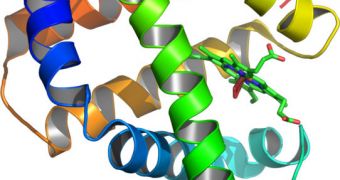A group of investigators in the United States recently managed to demonstrate that it is possible to use a computational approach to design working proteins capable of fighting viruses. This was never shown to be possible before, experts in the team say.
The newly-developed antiviral protein cannot be found in nature. It was produced by a computer, with the only goal of being effective against the flu virus. It works by targeting specific chemicals on the surface of viral molecules.
As this happens, the viral agent loses its ability to invade new host cells, and also to reproduce. This means that the immune system will have a much easier job at removing it from the body than before.
A detailed account of all the new conclusions was published in the May 12 issue of the top journal Science. The researchers involved in the work say that the new proteins could have other uses too.
For example, they may be employed in new tools designed to identify and find viral infections. This means that they could have both diagnostics and therapeutic potential, Science Blog reports.
“Influenza presents a serious public health challenge, and new therapies are needed to combat viruses that are resistant to existing anti-viral medications or that escape the body’s defense systems,” the research team explains in the journal entry.
University of Washington (UW) Department of Biochemistry experts Sarel J. Fleishman and Timothy Whitehead are the lead authors of the new study, alongside UW Department of Molecular Biology expert Damian C. Ekiert.
The latter is also based at the Scripps Research Institute Skaggs Institute for Chemical Biology, SRI expert Ian Wilson and UW researcher David Baker are senior authors of the research paper.
“This finding suggests that this new protein design may have virus-neutralizing effects against multiple influenza subtypes,” the team goes on to say. The researchers add that this work demonstrates that efficiency of using computational methods in designing new molecules.
The scientists also believe that the design methods employed in the models are the correct ones. At this point, they are somewhat limited, but that limitation could easily be surpassed in future versions.
What this means is that the way the new protein was designed captures the most essential features of protein-protein interactions.

 14 DAY TRIAL //
14 DAY TRIAL //